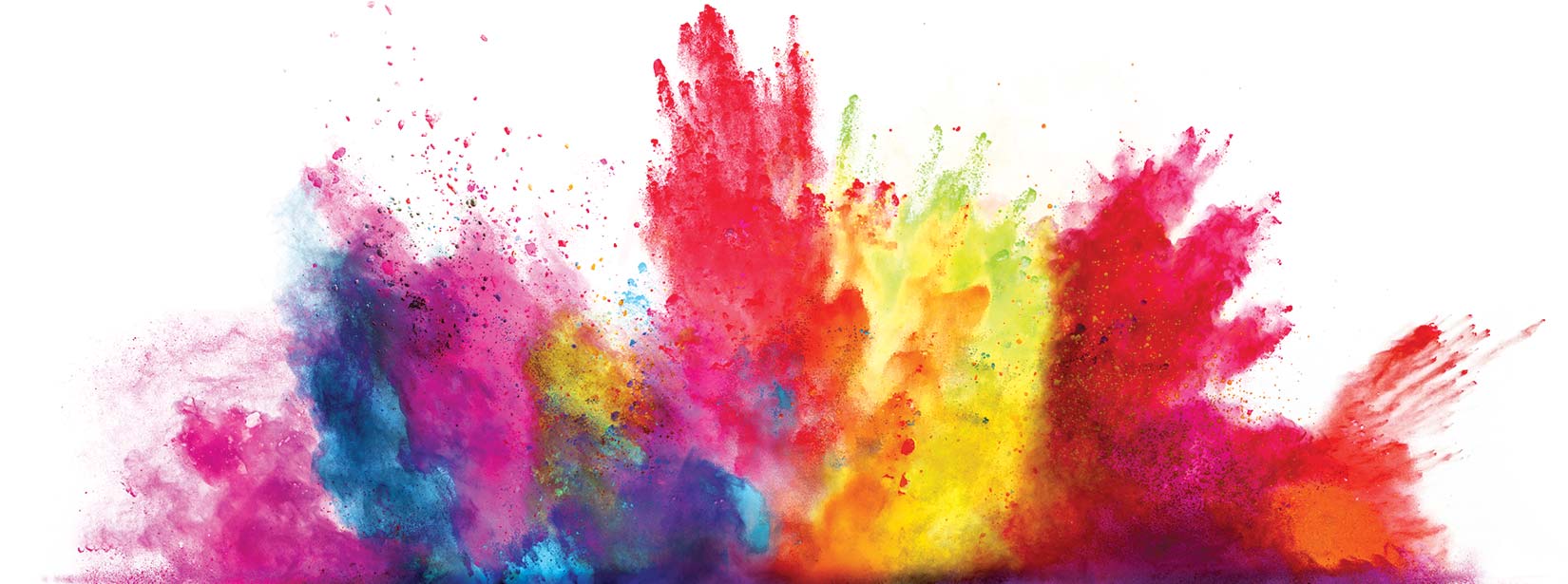Artists and Scientists Are More Alike Than Different
View Cover
Editors’ Note: This feature appears as it was published in the Fall 2017 edition of UT Dallas Magazine. Titles or faculty members listed may have changed since that time.
While the traditions and audiences of scientists and artists may be diverse, the creative processes they use to achieve success are more alike than different, and they are motivated by the same shared goal — to understand and describe the world around them and to communicate that understanding and insight to others. At UT Dallas, researchers often blur the lines between science and the humanities, using concepts and tools from the arts to inspire or inform scientific inquiry, and vice versa.
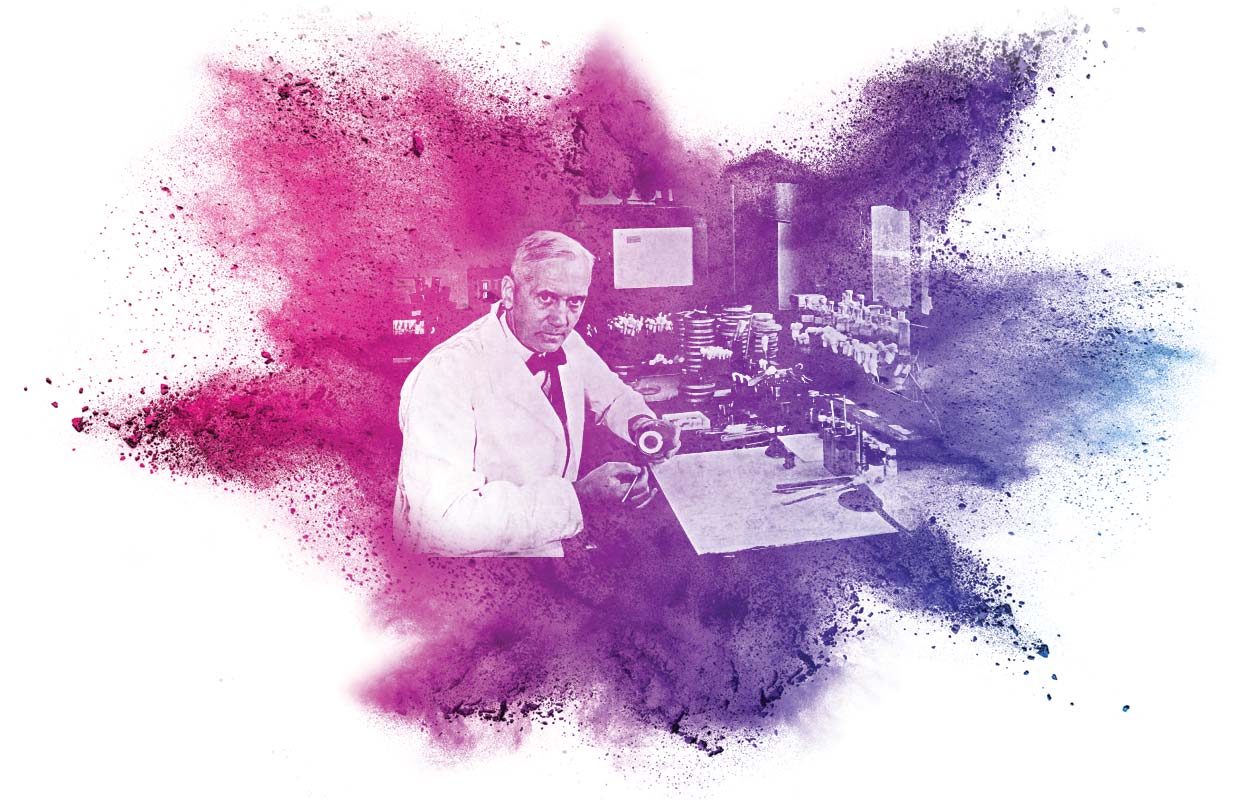 Dr. Alexander Fleming
Dr. Alexander Fleming
Dr. Alexander Fleming was a Scottish bacteriologist and an amateur painter, mostly with watercolors. He also would paint faces and figures in another medium — bacteria — carefully placing microbes of different strains in a Petri dish so that as they matured, their various colors would form a scene. Fleming’s experience with pigments and painting may well have contributed to one of the most significant scientific discoveries of the 20th century — the first modern antibiotic, penicillin. That discovery resulted when he noticed the abnormal appearance of bacteria in a dish that had been invaded by the penicillin mold while he was away on holiday.
“We see quite often in the literature that people are able to take experience in one domain and by means of analogy, use that experience in another domain,” said Dr. Magdalena Grohman, associate director of the Center for Values in Medicine, Science, and Technology in the School of Arts and Humanities at The University of Texas at Dallas. “That can broaden your possibility of inspiration and, later, a solution. If it weren’t for the fact that Fleming was using bacteria to paint, would he have recognized that something unusual had happened when he saw penicillin mold growing in a dish?”
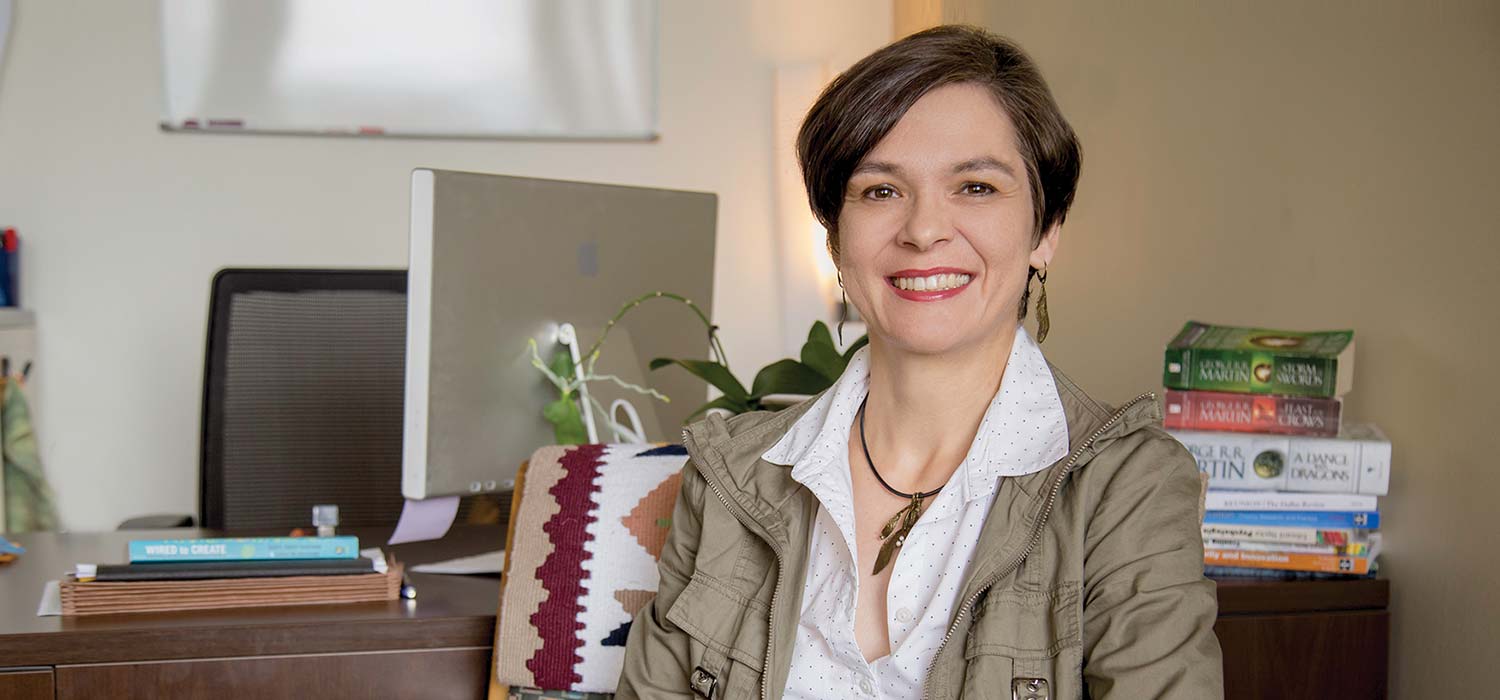 Dr. Magdalena Grohman
Dr. Magdalena GrohmanDefining Creativity Across Disciplines
Since she was a high school student in her native Poland, Grohman has been interested in the psychology of creativity, creative thinking and the creative process. At UT Dallas she teaches courses on creativity, including how it is measured and defined. Students from a mix of majors take her survey class.
When asked whether creativity and inspiration are different among traditional artists versus scientists, she said the issue is complex.
What is known, she said, is that creative people across domains are good at defining a problem, as opposed to strictly solving a problem.
“In cognitive psychology it has been shown that people who spend more time on constructing the problem often come up with more novel, useful and unique solutions to the problem,” Grohman said. “In scientific inquiry, this will be trying to define the problem to solve, while in artistic domains, it may be choosing the right idea to convey.”
While some psychologists contend that creativity is domain specific — it’s different for a mathematician and a poet, for example — others say it is domain general, she said. The debate is open.
“But what we do know from the areas of cognitive psychology and personality research is that there is strong evidence that creative people across domains share one trait: They are open to experience,” she said.
This characteristic includes being imaginative, inquisitive and curious, and having the propensity to hold two mutually exclusive thoughts, Grohman said. It’s also being open to “weird associations” and recognizing atypical analogies or connections in the world around us.
 Dr. Russell Stoneback created a “light guitar” for his doctoral dissertation.
Dr. Russell Stoneback created a “light guitar” for his doctoral dissertation.From Guitar to Earth’s Atmosphere
Long before Dr. Russell Stoneback was an assistant professor of physics in the William B. Hanson Center for Space Sciences at UT Dallas, he was a curious kid who asked a lot of questions, mostly “why?”
“When I learned that it was the job of a physicist to figure out ‘why,’ I knew that’s what I wanted to do,” he said.
As a physics undergraduate at UT Austin, he started playing the guitar and built his own electric guitar. Then, that curiosity kicked into overdrive.
In a traditional acoustic guitar, the plucked strings cause the wooden body to vibrate, which produces sound waves that resonate in the instrument’s cavity. The specific kind of resonance, called Helmholtz resonance, is responsible for the lower notes, or bass feel of the instrument.
Stoneback wondered whether he could create the same effect of an acoustic guitar with light.
“Acoustic guitars rely on the resonance of sound. A light guitar uses the resonance of electromagnetic waves — or light waves — to produce music. I wanted to prove that phenomenon existed, that it worked and could be used for music. And it can.”
Stoneback worked on the physical and mathematical aspects of the light guitar for his doctoral dissertation at UT Dallas, building a metal body with a hole that looked much like a traditional guitar. You can’t directly hear the music it produces though, because there are no sound waves. The “light music” isn’t visible either, but it sounds like a regular electric guitar when the output is fed through a computer.
“When you send electromagnetic waves through the light guitar, the electrons in the metal move to create a current, which is akin to the wood vibrating in an acoustic guitar,” Stoneback said. “This current then produces electromagnetic waves that resonate within the cavity in the same way that sound waves do.”
Stoneback followed his creative leap from sound to light with one from music to space.
Like the body of the light guitar, the Earth’s ionosphere — located above our breathable atmosphere — is a conductive shell, with holes at the North and South poles. As streams of charged particles from the sun — the solar wind — blow past those holes, they create a Helmholtz resonance, just like air blowing across the top of a bottle creates a low note.
“I applied the same model that I developed for the light guitar to the Earth,” Stoneback said. “If I’m right, this would be a very fundamental way in which energy is transmitted from the sun to the Earth’s atmosphere. And I think the same thing happens on the sun.”
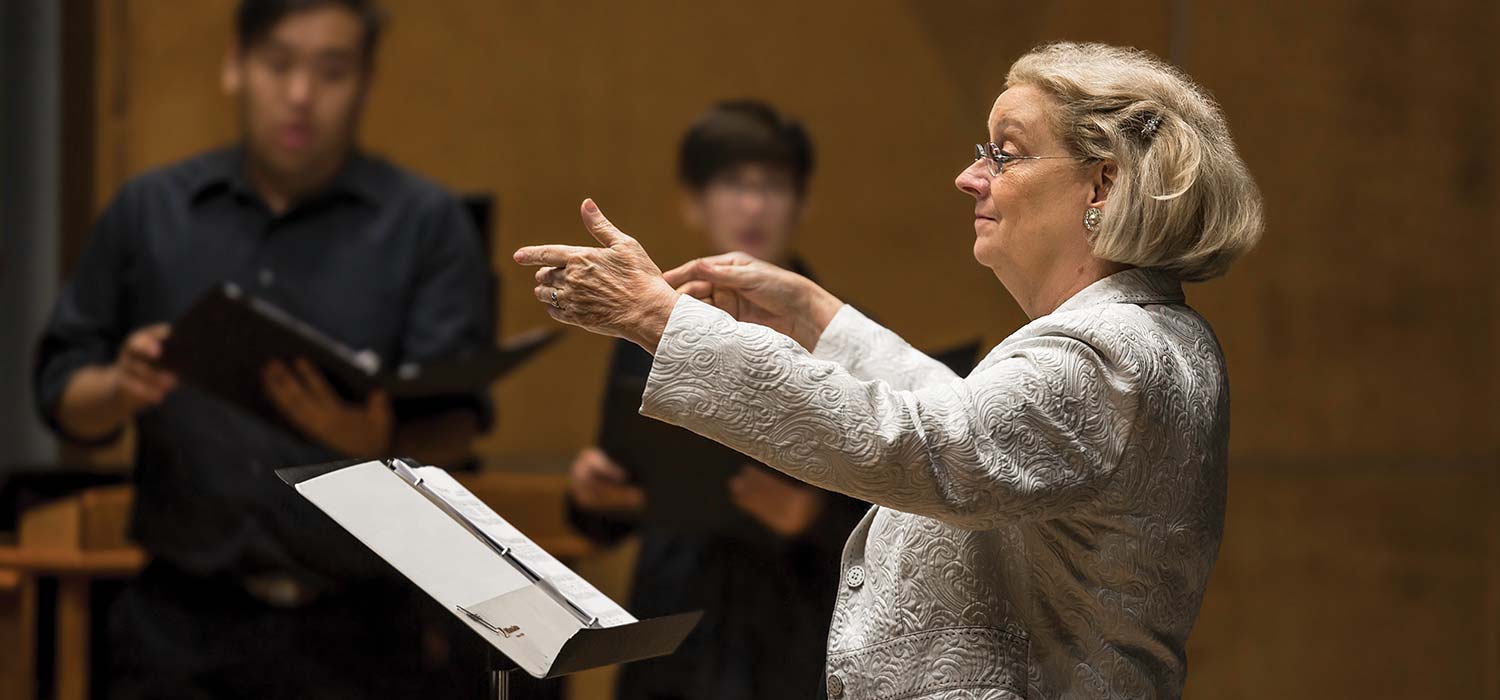 Dr. Kathryn Evans started as a mathematician before turning to music.
Dr. Kathryn Evans started as a mathematician before turning to music.Can Music Make You Smarter?
Whether it’s the physicist who plays the guitar or the sculptor who does backyard astronomy, from a psychological standpoint it’s tricky to prove that experience in one domain can make someone actually perform better in another domain.
“This kind of transfer is hard to prove,” Grohman said. “We still don’t know if that happens or not.”
Dr. Kathryn Evans is on a mission to find out.
Evans started out wanting to be a mathematician. She earned bachelor’s and master’s degrees in math and taught the subject. But she also has always had a passion for music, so she got a master’s in performance and has toured the world as a vocalist and conductor. In the 1990s, she came to UT Dallas to help restart the campus’s music and arts programs. She currently teaches vocal and choral performance in the School of Arts and Humanities and is working on developing curriculum across the arts, sciences and humanities with colleagues in the School of Arts, Technology, and Emerging Communication. In the spring of 2018, she will teach a class called Music, Science and Technology, open to students in any major.
With both math and music constantly in her thoughts, Evans began wondering why certain people pursue both the arts and science, and why those in STEM fields — science, technology, engineering and math — often are also good musicians.
For her doctoral dissertation in the ATEC program, Evans surveyed UT Dallas students about their experience studying music, performing music and in sound design, and how those experiences related to their academic performance in other areas. The student population offered a unique pool: About three-quarters of UT Dallas students major in a STEM field.
“Having to break a big piece down into little pieces — and practice it over and over again — well, that’s how you learn stuff. That’s how you learn biochemistry, or how to move your fingers on the violin.”
“We found there was something about studying music theory that was the No. 1 indicator of academic success,” said Evans, who earned her PhD in 2016.
Music theory involves analyzing the structure of musical pieces, including drilling down to smaller and smaller bits like individual notes, measures and phrases, which leads to a greater understanding of the whole.
“Having to break a big piece down into little pieces — and practice it over and over again — well, that’s how you learn stuff,” Evans said. “That’s how you learn biochemistry, or how to move your fingers on the violin. That’s how you learn the Krebs cycle, which is how we digest our food to get energy.
“That’s what these students said music had taught them.”
The next step for Evans will be trying to test whether experience in one domain actually improves performance in another.
“It’s not as clean as saying, ‘If you can do this, you can do that.’ This type of skills transfer is diffuse and hard to prove,” she said, echoing Grohman’s perspective. “It’s not as simple as saying, if your kid takes music theory and can identify the key of A major, then they’ll be able to figure out stochastic chemistry. It’s not that clean and simple.”
What is clear is that in both the creative and the scientific realms, it takes multiple steps — and sweat — to reach that “Aha!” moment, Grohman said. Innovators who are passionate about their pursuits will spend hour upon hour in the most boring aspects of that pursuit before reaching a final product, she said.
“Success comes only after you go through a certain process,” Evans added. “Whether it’s music or drawing or sculpture or particle physics, the process has a lot to do with breaking the subject down into smaller pieces that are manageable, until your mind puts all those pieces together in a whole that makes sense.”
 Dr. Moon Kim uses high-tech instruments to create microscopic pieces of art.
Dr. Moon Kim uses high-tech instruments to create microscopic pieces of art.When Science Becomes Art
Materials scientist Dr. Moon Kim is an expert at working with the very smallest pieces imaginable. Using instruments such as electron and ion beams to manipulate individual atoms and molecules, and transmission electron microscopes to magnify and view his creations, Kim is looking for new types of materials to use in advanced electronics and nano robotics, among other applications.
But his science practice has also enmeshed him in an art discipline called “nanoart,” which aims to discover and accentuate the artistic beauty of nanometer-sized natural and artificial structures — so small they can’t be seen with the naked eye.
Kim began observing nanoscale structures as a graduate student at Arizona State University, where he used a variety of microscopy instruments and techniques to characterize and build new materials.
“From time to time I came across interesting features that may not have had a scientific value, but they were aesthetically beautiful for different reasons. That’s how I got started,” said Kim, a Louis Beecherl Jr. Distinguished Professor who holds appointments both in the Erik Jonsson School of Engineering and Computer Science and in ATEC.
Kim and his students once imaged a nanoshell particle used in medical imaging, with iron oxide concentrated on the surface of the shell. When the researchers added a bit of false color to make the iron oxide glow red, the image transformed into a nano total eclipse. The image won the grand prize in a 2015 contest sponsored by an instrumentation company.
Kim’s nanoart gallery is also filled with sculptures and copies of masterpieces that he and his students have created, including tiny flags, jet fighters and a grayscale version of Vincent van Gogh’s Starry Night.
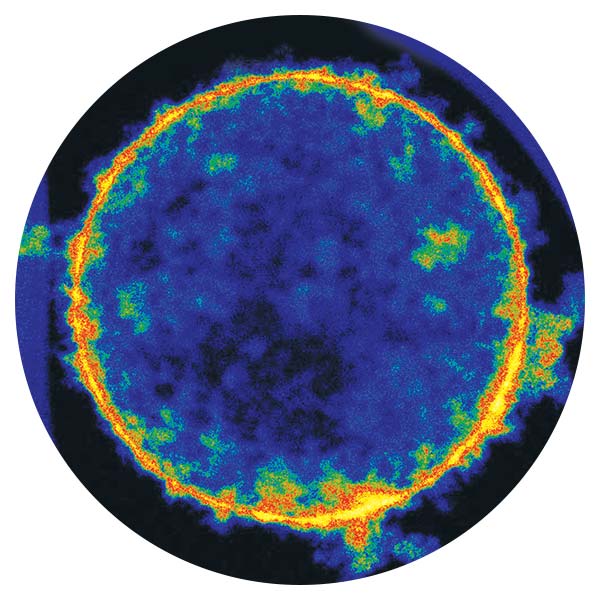
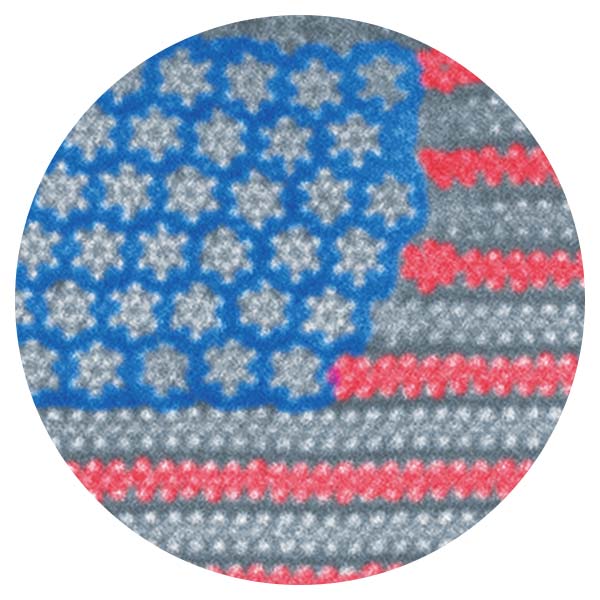

“Especially for nanosculpture, making these creations helps students train to use high-value instruments,” Kim said. “It’s not always fun to learn or operate, so this provides new motivation. With this skill set, they become trained to carry out their own scientific work.
“I also encourage them to explore other projects that they think are beautiful.”
Kim recently published an online children’s book about the union of art and science, and he has teamed up with colleagues in ATEC to create a virtual reality tour about the nanoworld for students.
“With images, you can communicate much better with the general public, especially with young minds,” Kim said. “A lot of kids think science and engineering is difficult, but if you can find some artistic value, perhaps you can engage them.”
 Dr. Roger Malina personifies the blending of art and science — he is a distinguished professor of arts and technology as well as a professor of physics.
Dr. Roger Malina personifies the blending of art and science — he is a distinguished professor of arts and technology as well as a professor of physics.When Art Becomes Science
The School of Arts, Technology, and Emerging Communication, which spun out of the School of Arts and Humanities in 2015, offers academic tracks that include critical media studies, mediated communication, games, animation, and design and production.
Its name and its mission alike describe the promise of seamlessly blending multimodal ways of thinking, creating and innovating, with more than 1,500 students and faculty devoted to pursuits that bridge the creative and the technical.
Dr. Roger Malina, who joined the UT Dallas faculty in 2011 as the Arts and Technology Distinguished Chair, embodies the intermingling of art and science, with dual appointments in ATEC and the Department of Physics in the School of Natural Sciences and Mathematics. As a space scientist with expertise in extreme ultraviolet astrophysics, he directed astrophysics laboratories in France and California, led observational satellite projects for NASA, and is dedicated to merging arts and humanities with science and engineering.
“ARTECA champions and documents the work of the new ‘hybrid’ professionals whose academic pursuits bridge the arts and sciences.”
Two hundred years ago, before the widespread use of photography, artists and illustrators were key members of scientific expeditions, he said. Their role was to represent what they were seeing.
“Today, scientists struggle with how to visualize amazingly complex data, so there is a new role for artists, not just in the service of science, but to make sense of it using artistic and design methods,” Malina said.
As scientific illustration has moved into the digital age, it has transformed into data representation, which includes concepts such as sonification, visualization, and virtual or augmented reality, all areas where artists and designers thrive.
In 2013, Malina founded the ArtSciLab at UT Dallas to facilitate new forms of collaboration between artists and scientists. Building on his decades of experience as executive editor of the Leonardo suite of publications from MIT Press, which provide a platform for the arts/science/technology scholarly community, he and his ArtSciLab collaborators recently added to that suite ARTECA, a digital publishing project led by Cassini Nazir, clinical associate professor in ATEC.
“ARTECA champions and documents the work of the new ‘hybrid’ professionals whose academic pursuits bridge the arts and sciences,” Malina said.
The ArtSciLab collaborations involve a mix of established UT Dallas scientists, computer programmers, artists and art historians translating data to sight, sound and experience.
The Defense Advanced Research Projects Agency (DARPA) has funded one such project to “sonify” imaging data from the brain. Combining the expertise of Dr. Gagan Wig, assistant professor in the School of Behavioral and Brain Sciences and in the Center for Vital Longevity, with that of sound designer Scot Gresham-Lancaster in ATEC, the approach allows data from MRI scans to be represented by sounds from which a trained listener might be able to discern patterns of brain connectivity not readily seen through available visualization strategies.
The goal is to produce a kind of “data stethoscope” to compare brain networks of healthy and unhealthy individuals.
The effort is creating not only a new way for scientists to study complex functions of the brain but also an opportunity to “perform” data in art settings, said Gresham-Lancaster, assistant professor in the sound design program.
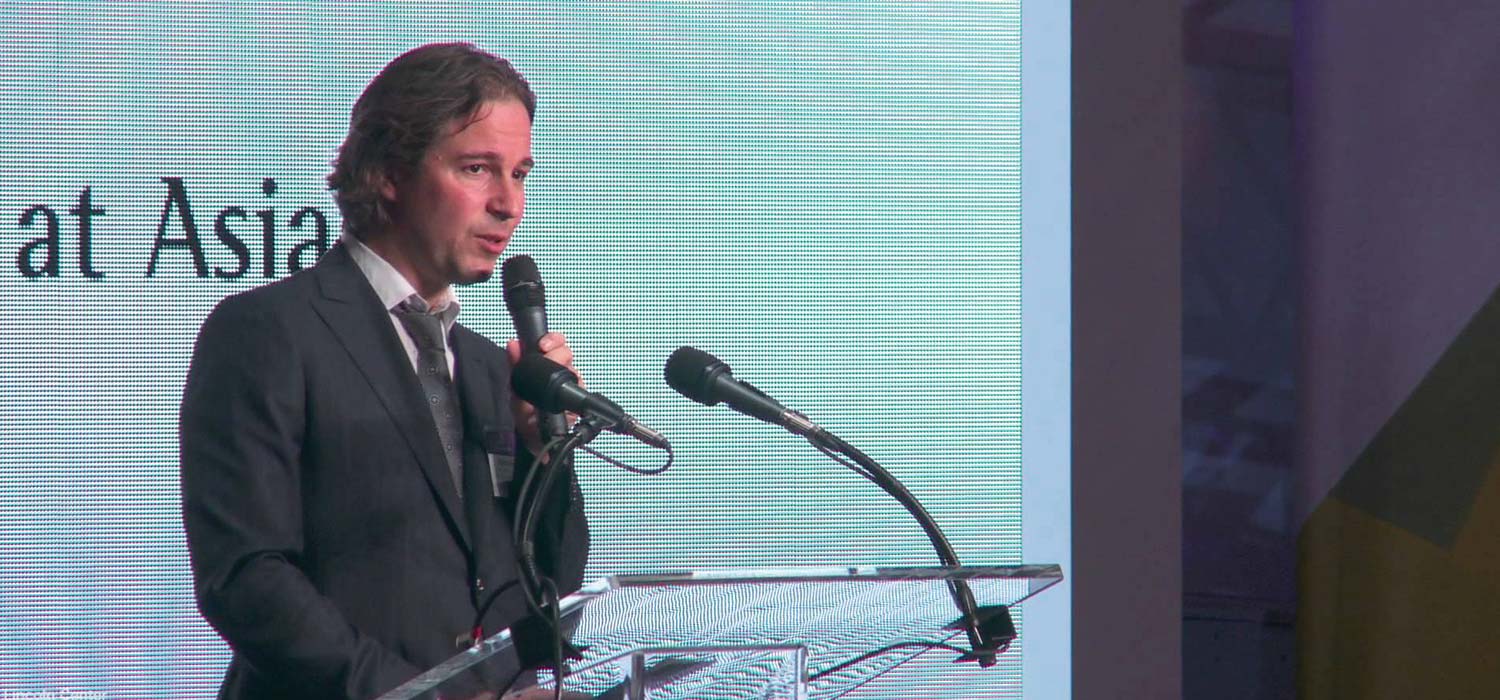 Dr. Maximilian Schich
Dr. Maximilian SchichThe Artfulness of Data
Dr. Maximilian Schich, associate professor in ATEC and a founding member of the Edith O’Donnell Institute of Art History, is equally at home with art and cultural historians as he is with physicists and computer scientists. An art historian by training, Schich joined UT Dallas in 2013, where he merges big data science, complex networks and art history to bring quantitative and qualitative inquiry together.
“By combining network science with art and cultural data, we slip science in the door as a way to analyze this field.”
In 2014, he and a team of network and complexity scientists published a study in the journal Science that reconstructed the migration and mobility patterns of more than 120,000 notable cultural influencers over a time span of 2,000 years. In collaboration with the journal Nature, Schich and co-author Dr. Mauro Martino, a researcher and artist with the IBM Watson Group, created a stunning video to present the findings. The video shows tiny dots of data — representing people — moving from birthplace to place of death, from one city or country to the next, occasionally leaping across the ocean to new continents.
“There is a lot of information and unexpected structure in a network that emerges beyond just the properties of the nodes, that is, the objects or individuals themselves and their immediate connections,” Schich said.
Visualizing the migration patterns in and out of Europe and North America provides valuable insight into large-scale cultural dynamics, he said, especially for a lay audience.
“The Nature video was immediately understood by a million people, but only a certain group could read the figures and plots in the actual scientific paper,” he said.
“By combining network science with art and cultural data, we slip science in the door as a way to analyze this field. The important thing for me is, this is not a negation of how art history is traditionally done. It’s an addition.”

The Big Picture
As UT Dallas researchers and students practice creativity and inspiration in artistic and scientific endeavors — and often both — Evans cautions that universities and educators should keep their eyes on the big picture.
“One of the takeaways from my time at UT Dallas and my research is that having experience in those two domains, what some consider very disparate areas, is really valuable,” she said. “This is why I worry about us losing one or the other as kids come into college. We have a creeping major problem, where departments keep adding requirements to the point where they essentially lock out everything else that a student could do. Some students take only one course in the arts, or maybe only one science elective, and then they work on their major. And I think that’s terrible. To experience all the other things in life that also matter, that maybe make us human, is also important.
“It’s clear that we need both/and, not either/or.”
